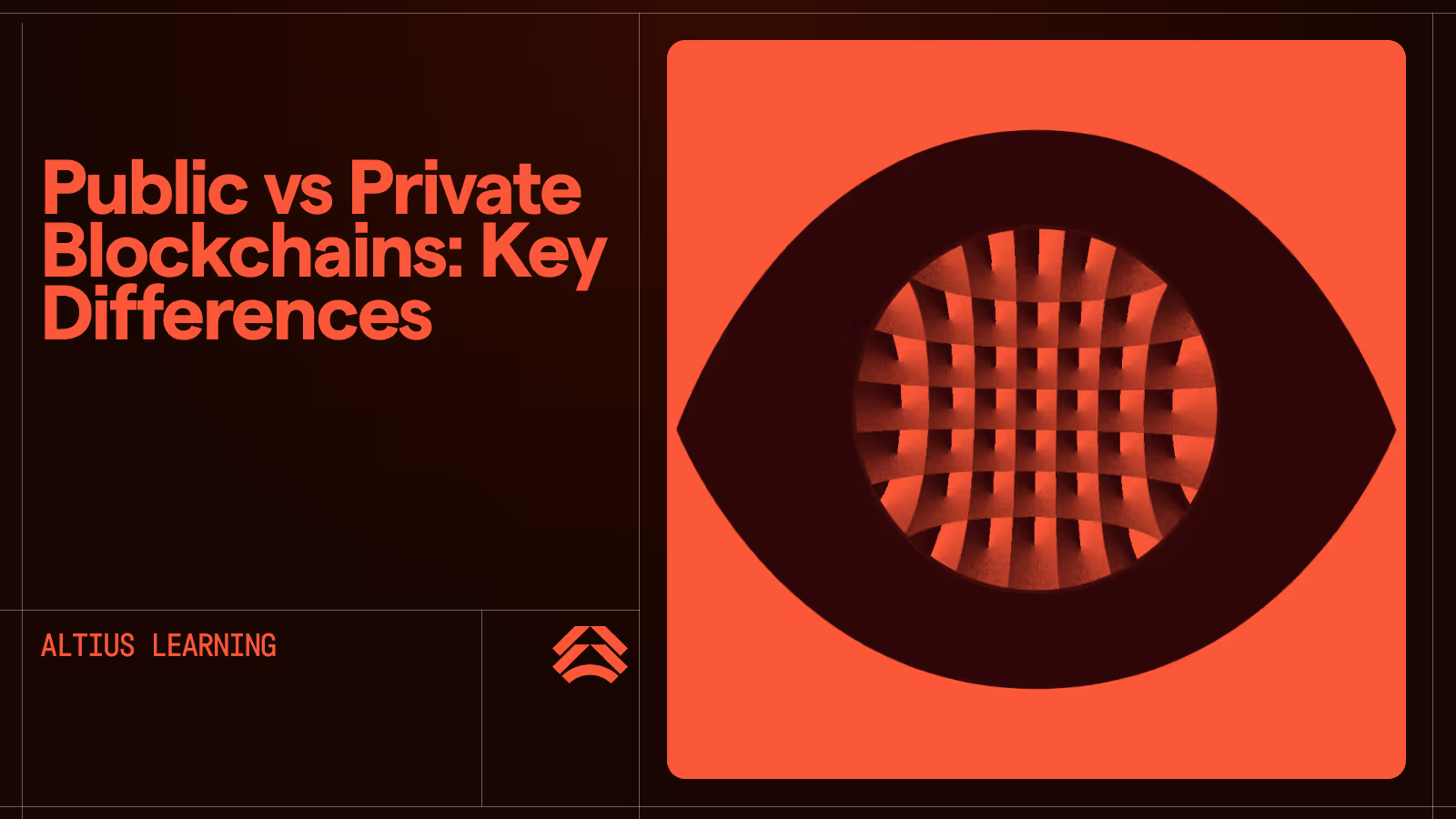Public vs Private Blockchains: What’s the Difference?

TLDR / Key Takeaways:
- Public blockchains are open, decentralized, and transparent - anyone can participate.
- Private blockchains are permissioned and controlled by selected entities - offering speed and privacy at the cost of decentralization.
- Public chains excel in trustless systems like DeFi and NFTs, while private chains suit internal enterprise use cases.
- Hybrid blockchain models are emerging, combining the strengths of both approaches.
- Your choice depends on your use case, compliance needs, and scalability goals.
When organizations start exploring blockchain adoption, one of the first strategic decisions they face is choosing between public and private blockchains.
At Altius Labs, we work with enterprises, institutions, and startups navigating this choice. In this guide, we’ll break down the key differences, pros and cons, and help you understand which model aligns best with your use case.
If you're still learning the basics of blockchain itself, check out our blockchain article first.

What Is a Public Blockchain?
A public blockchain is an open, permissionless network where anyone can participate as a user, validator, or developer. There’s no central authority controlling the system.
Popular examples include:
- Bitcoin
- Ethereum
- Polygon
- Solana
Public blockchains rely on decentralized consensus mechanisms like Proof of Stake or Proof of Work. All transaction data is transparent and auditable by anyone.
Key Features of Public Blockchains
- Open access for anyone to read, write, or participate
- High transparency and immutability
- Security achieved through distributed consensus and economic incentives
- Usually slower and more expensive due to the need for network-wide validation
What Is a Private Blockchain?
A private blockchain is a permissioned network. Access is restricted to specific participants who are approved by a central authority or consortium.
Private blockchains are often used in enterprise settings where control, privacy, and performance matter more than decentralization.
Examples of private blockchain frameworks include:
- Hyperledger Fabric
- R3 Corda
- Quorum
Key Features of Private Blockchains
- Controlled access - only authorized participants can read or write data
- Faster transaction processing
- Lower operating costs
- Less decentralized - often managed by one or a few entities
- Suitable for internal enterprise applications
Pros and Cons for Enterprises
Choosing between a public and private blockchain isn’t a one-size-fits-all decision for enterprises. It depends on your business goals, compliance needs, and appetite for control versus openness.
Benefits of Public Blockchains
- Trustless interactions across borders
- Access to global user bases
- Network effects and liquidity (for DeFi or tokenized assets)
- Full audit trails
Challenges of Public Blockchains
- Regulatory uncertainty
- High transaction fees
- Data privacy concerns
- Limited control over network parameters
Benefits of Private Blockchains
- Full control over access and governance
- Lower operational costs
- High throughput and low latency
- Tailored privacy settings
Challenges of Private Blockchains
- Reduced decentralization and censorship resistance
- Limited external trust
- Smaller network effects
- Vendor lock-in risks
Hybrid Models - The Best of Both Worlds?
For many enterprise projects, the right answer lies somewhere in between - using a model that leverages both public transparency and private control. Therefore, some organizations choose a hybrid blockchain architecture, combining the best of both worlds.
For example:
- Sensitive data stays on a private chain
- Public chain used for anchoring proofs or token issuance
- Modular execution layers allow enterprise applications to scale across both environments
Final Thoughts
Choosing between a public and private blockchain isn’t just a technical decision - it’s a strategic one. Your choice will impact security, scalability, cost, and trust models.
Public blockchains offer transparency and decentralization but come with trade-offs in speed and control.
Private blockchains offer privacy and efficiency but at the cost of reduced openness.
If you’re building infrastructure, issuing digital assets, or deploying enterprise-grade solutions, we’re here to help architect the right blockchain stack for your needs.
.svg)
